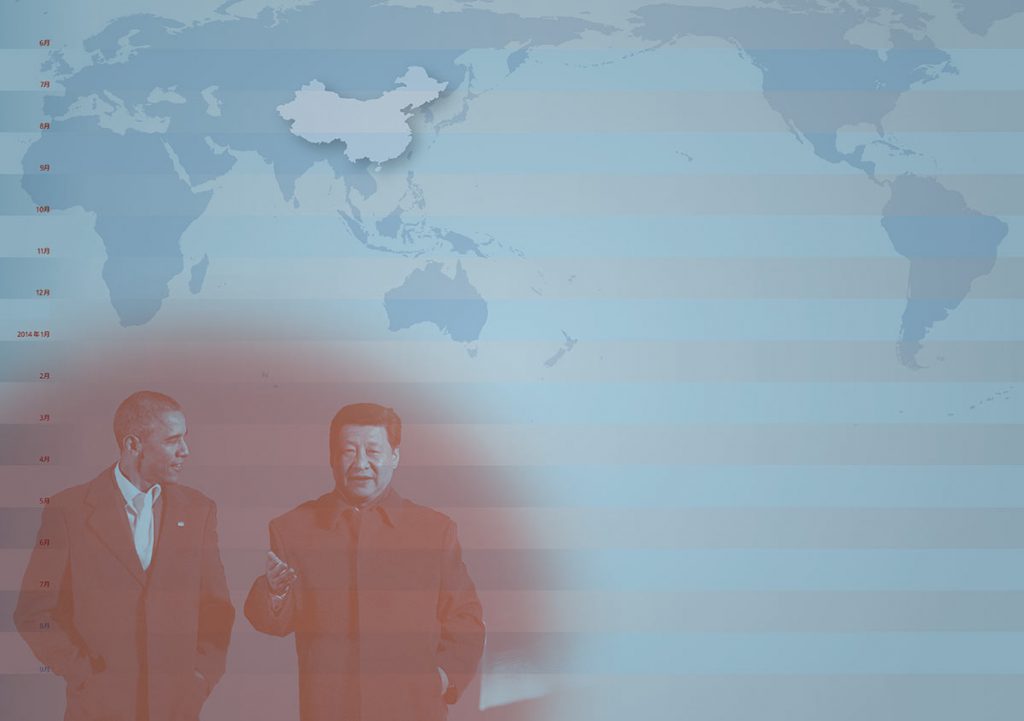Xi Jinping’s formulation of the Community of Shared Destiny was a key rhetorical device used in China’s regional and international policy during 2013–2014. It promised to ‘operationalise’ resuscitated, and long-debated ideas related to All-Under-Heaven tianxia, discussed in the Introduction to this volume. Non-mainland analysts and commentators generally have scant interest in Chinese party-state attempts to articulate new international relations or strategic concepts in a language that weds statist Confucian concepts with those of Marxist-Leninist modernity. Perhaps it is an affront that a derivative Marxist state lays claim to some unique approach to world affairs, even though its economic and global heft are undeniable. Status quo thinkers rarely want to make room for unorthodox approaches, especially those essayed by a one-party state that has been in an agonistic relationship with the West since the Second World War.

One Belt One Road: China is working with sixty nations to build a modern-day Silk Road, on land and by sea
Source: chinadialogue.net
Nonetheless, the concept of Shared Destiny continued to enjoy Xi Jinping’s endorsement; in recent years, the expression appeared no fewer than sixty-two times in the Chinese leader’s statements and speeches. As we noted earlier, Shared Destiny is premised on mutuality; as Xi Jinping put it, bilateral relationships and the regional order rely on amity, sincerity, mutual benefit and inclusiveness. But China is, if nothing else, a radically pragmatic state that cloaks its needs in high-flown rhetoric and bombast. On the ground it is concerned with the practical organisation of national relationships and it pursues this with a single-minded obsession with hierarchy, structuring its concentric view of the world according to various levels of strategic relationship, each with elaborate conditions and benefits attendant upon them.
In the Maoist-era international affairs were conceptualised in terms of Three Worlds, that of the regnant superpowers, a cluster of developed nations and the riven nations of the Third World. Mao Zedong constantly mulled over the complex interplay between these spheres, calculating his strategic moves according to what he saw as fluid contradictions and advantageous opportunities for China. In the new and evolving ordering of the world as conceived by Beijing, the communities of shared destiny too jostle for attention, and they demand constant cultivation, just as strategic partnerships require nurturing in the hope of real-world and long-term pay-offs.
Although the term Shared Destiny has a prominent place in Chinese discourse, over time it may well be overshadowed by the well-funded propaganda push from late 2014 to advance the newer concept of One Belt One Road 一带一路. This is a series of proffered trade and communications corridors promised to embed China further into global networks, and to allow China to bind others to what it has called its ‘locomotive of Chinese development’ 中国发展的列车.
Evening Talks at Yingtai
The year 2014 ended with blue skies for China. The cerulean vault over and crisp air of Beijing was cleared as a result of a months’ long government-directed mass campaign to reduce pollution in and around the Chinese capital. The engineering of what would be celebrated as ‘APEC Blue’ or APEC蓝 for the November 2014 APEC Summit involved the policing of factory, vehicle and domestic emissions by over 400,000 cadres in Beijing itself, the city of Tianjin, as well as in the nearby provinces of Hebei, Shanxi, Shandong, Henan and Inner Mongolia.
The blue skies of 1–12 November provided a benign covering for another smoothly run global event in the Chinese calendar. For the world APEC 2014 was made all the more significant by the fact that it featured a major China–US Summit on the sidelines. Known as the ‘Evening Talks at Yingtai’ 瀛台夜谈 — Yingtai being the island palace at Zhongnanhai, the party-state compound in Central Beijing — the summit was regarded as a significant but similarly casual event as the June 2013 Sunnylands Summit in the US (see Chapter 2 ‘Whose Shared Destiny’, pp.60–61). The Beijing meeting between presidents Xi Jinping and Barack Obama was capped by a US–China Joint Announcement on Climate Change. A prelude to the United Nations Climate Conference to be held in Paris in late 2015, this agreement promised ambitions post-2020 actions on climate change. The formal announcement declared that:
The United States intends to achieve an economy-wide target of reducing its emissions by 26%–28% below its 200 level in 2025 and to make best efforts to reduce its emissions by 28%. China intends to achieve the peaking of CO2 emissions around 2030 and to make best efforts to peak early and intends to increase the share of non-fossil fuels in primary energy consumption to around 20% by 2030.
There were also undertakings to increase these targets over time.
In the age of the Anthropocene, that is the global era shaped crucially by human activity, shared destiny is inextricably bound up with climate change, resource depletion and efforts at mitigation. Given the importance of pollution in China and, indeed, the near-hysterical concern that the Chinese party-state has about such nebulous polluting factors as those found in the realm of ideas, politics and culture, we will take Pollution 染 as the theme of the 2015 China Story Yearbook.




